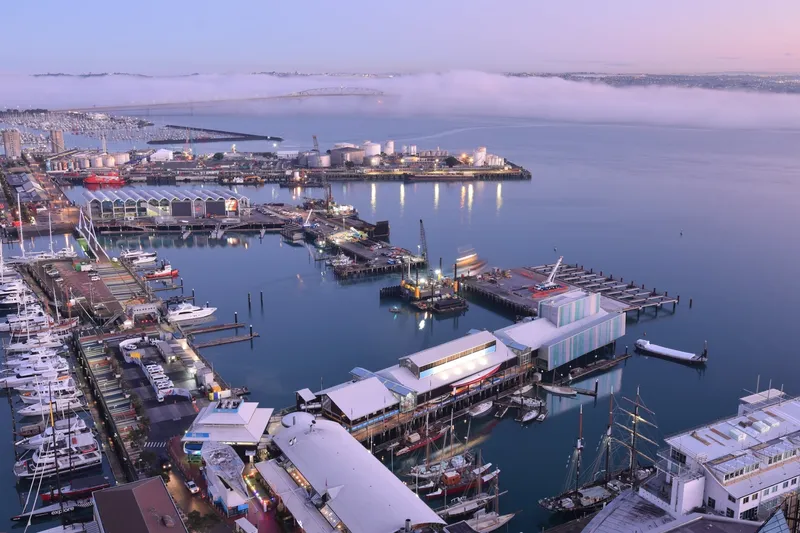NewsPerspectives
Infrastructure’s strength in numbers – we’ve got the funding, now how do we work together to deliver?

An alliance model for delivery has been successfully formed for the America’s Cup. Photo / Wynyard Edge Alliance
The Government’s recent $12b infrastructure spend has brought with it a double-edge sword.
On one side it will enable a significant pipeline of transformational projects. The other side raises questions around prioritisation, capacity and funding. Now, we need to understand how we deal with these challenges to deliver on the promises made.
Many suggest the investment is the largest commitment by any Government to addressing our aged infrastructure. While this commitment is welcomed and necessary; are the commonly accepted ways of designing, procuring and delivering infrastructure going to meet these challenges?
We have an opportunity now to step back and look at alternative ways to tackle these challenges; a chance to move the dial on how we deliver transformational public infrastructure.
This demands fresh ways of thinking, new combinations of ideas and new angles of enquiry. Unsurprisingly, bringing the best minds together to propose, challenge and test alternatives, actually works.
The scientific and medical research world does this successfully. The emerging public sector alliance models, such as that utilised with the formation of the Wynyard Edge Alliance to deliver Auckland’s America’s Cup infrastructure, have produced positive outcomes and the creative sector has always worked this way.
Perhaps spending more time up-front, getting fresh minds and acknowledged experts together could produce a range of human-centred infrastructure outcome options to test before heavy, fixed commitments are made to resources, time and expense.
All successful partnerships are built around a desire to work collaboratively. Each party agrees to behave and work in a way that is built on trust and respect. This creates an environment that encourages innovation, explores the uncertainty of the new and develops alternative ways of looking at problems and possible outcomes.
Collaboration brings an energy and focus that encourages us to challenge the status quo – as well as each other – to produce results in accelerated timeframes. This was powerfully displayed in the generation of the Christchurch City Centre Blueprint – designing a city in fewer than 100 days.
Still, collaboration is nothing without the right people. Delivering large-scale, public projects calls for truly original thinkers. Those that are prepared to ask the hard questions. People of creativity and insight who generate bold ideas.
We can no longer accept “but this is the way we’ve always done it” as an effective solution. Just because it’s low-cost and expedient doesn’t mean it produces lasting outcomes for either the end-user or the investor. Time spent up front, investigating and defining the problem and opportunity through a robust process of enquiry, will lead to holistic, long-term benefits.
The other aspect to consider is how storytelling can positively impact major new infrastructure delivery within communities. Stories have traditionally been used to connect people and place, express our history and culture and inspire groups of people to achieve impressive things. Think of the oral history relayed intergenerationally by Maori and Pasifika storytellers.
Stories connect us in a unique way and allow us to share a vision of what the future could be. But turning narrative-based thinking into practical infrastructure outcomes produces its own set of challenges and often isn’t prioritised.
The key to overcoming this lies in having a robust methodology, which produces a clearly articulated plan. This helps to set a vision and creates a powerful narrative, which all infrastructure projects should be grounded in. Without an outcome-based vision, infrastructure projects will not be future-proofed.
The future holds so many unknowns – issues we can’t yet predict, let alone have the answers to. The only thing that’s certain, is uncertainty, and climate change is the headline example of this.
We now have the numbers. We need to work together, putting greater energy and effort up-front, creating a powerful narrative to sell the vision, working collaboratively to bring the best minds together –– in order to prepare for the future and reap the benefits downstream.
When we partner, collaborate, share and test our thinking and the new possibilities, we can be more flexible when dealing with change. This will enable us to work up more effective solutions at a greater speed to deliver infrastructure that is holistic, authentic and a better fit with our communities, our country and our planet.
Rod Marler leads Warren and Mahoney’s Early Stage Strategy Consulting Team.